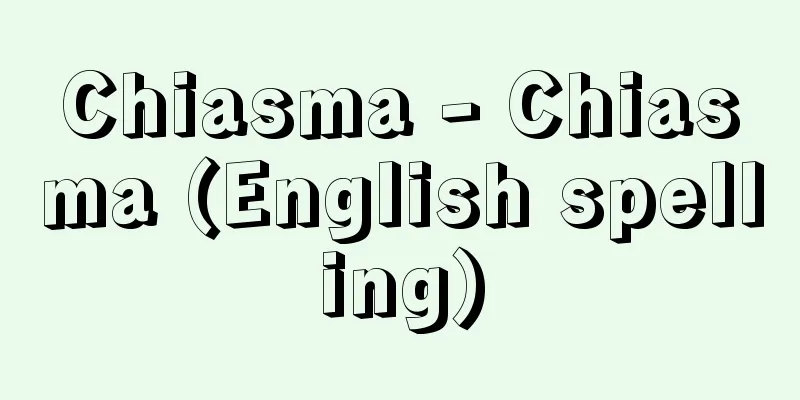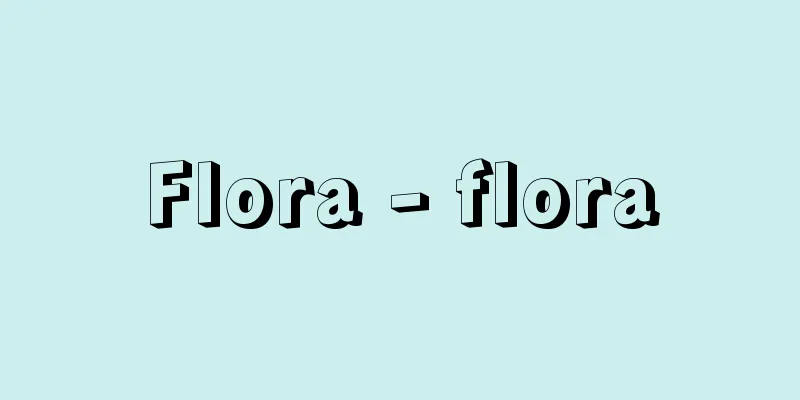Chiasma - Chiasma (English spelling)

|
During the prophase of meiosis, two paired chromosomes cross over at one or more sites, where chromosomal exchange occurs. Such chromosomal crossover sites are called chiasmas or chromosomal chiasmata. During the prophase of meiosis, homologous chromosomes pair up to form bivalent chromosomes. Each bivalent chromosome replicates to form two chromatids, and each bivalent chromosome ultimately consists of four chromatids. During the first meiotic division, the bivalent chromosomes separate at their pairing or replication sites, where crossovers occur between the paired chromosomes, resulting in chiasmata. The theory that chiasmata arise from the crossover of homologous chromosomes was proposed by Janssens and Darlington. The paired chromosomes are attached at the chiasmata and separate in other areas, resulting in the formation of several rings in the chromosomes. The one-sided theory (Darlington) states that the face of the ring that opens is reductive everywhere, i.e., opens between homologous chromosomes, whereas the two-sided theory (Sachs) states that the ring part including the centromere opens reductively, but the adjacent ring parts open evenly, i.e., opens between the duplicated chromosomes. In contrast, the new two-sided theory (Matsuura Hajime) states that the four chromosomes and the four centromeres can separate freely, and that the probability of reduction and equality is 1:2. The new two-sided theory has little data corresponding to genetic crossing over, whereas the one-sided theory has a lot of cytological and genetic support. Genes on the same chromosome should act in conjunction with each other during separation (this is called association), but they often act without association. This is because chiasmata are formed between homologous chromosomes, and exchange occurs at these parts. [Toshihide Yoshida] Source: Shogakukan Encyclopedia Nipponica About Encyclopedia Nipponica Information | Legend |
|
減数分裂の前期で、2本の対合した染色体は1個またはそれ以上の箇所で交叉(こうさ)し、その部分で染色体の交換がおこる。このような染色体の交叉個所がキアズマで染色体交叉ともいう。減数分裂前期で相同染色体は対合して二価染色体となる。二価染色体はそれぞれ複製によって2本ずつの染色分体となり、結局1個の二価染色体は4本の染色分体からなっている。第一減数分裂で、二価染色体はその対合面または複製面で分かれるが、そのとき、対合した染色体間で交叉がおこり、キアズマが生ずる。キアズマは相同染色体の交叉によって生ずるという説はヤンセンスやダーリングトンによって主張された。対合した染色体はキアズマの箇所で接着し、ほかの部分では離れているので、染色体にはいくつかの環状部がつくられる。その輪の開く面がどこでも還元的である、すなわち相同染色体間で開くというのが一面説(ダーリントン)で、これに対し動原体を含む環状部分は還元的に開くが、その隣接する環状部分は均等的に開く、すなわち複製した染色体間で開くというのが二面説(サックス)である。これに対し、4本の染色体と4個の動原体の分かれ方は自由で、確率的に還元と均等は1対2になるというのが新二面説(松浦一(はじめ))である。新二面説は、遺伝学的な交叉に対応するデータが少ないが、一面説は、細胞学的および遺伝学的に支持するデータが多い。同一染色体上にある遺伝子は、分離の際に互いに連なって行動するはずであるが(これを連関という)、しばしば連関しないで行動することがある。これは、相同染色体間でキアズマをつくり、その部分で交換がおこるためである。 [吉田俊秀] 出典 小学館 日本大百科全書(ニッポニカ)日本大百科全書(ニッポニカ)について 情報 | 凡例 |
<<: Atmospheric pressure - air pressure
>>: Tringa brevipes; grey-tailed tattler
Recommend
Ill-gotten Money
〘noun〙① Coin of bad quality or with defects . Akuz...
Ecribellatae
…There are seven families of spiders that inhabit...
Japan Travel Bureau
…In 1941, it was renamed Toa Travel Agency, in 19...
Daido Club
Political parties formed in 1889 and 1905. (1) Sei...
Hikayat Amir Hamzah
One of the heroic legends in classical Malay liter...
Goji berries
〘 noun 〙 The dried small red fruit of the goji ber...
Fairbain, WRD (English spelling) FairbainWRD
...Neurosis is also interpreted as a regression f...
Rifu [town] - Rifu
A town in Miyagi County in central Miyagi Prefectu...
River plain - Kaseihei
...Originally, any plain formed by the deposition...
Miscellaneous grains - Zakkoku
In Japan, rice, wheat, and barley are called stap...
Togetosaka (spiny comb) - Togetosaka
A general term for coelenterates (cnidarians) belo...
Angel Skin
...Bokeh on a red background is called "red ...
Tribal law
…BK Malinowski analyzed law as a social mechanism...
Francesco Domenico Guerrazzi
1804‐73 A political leader during the Italian Riso...
Koi (carp) - Carp
A fish of the carp family. It is widely distribute...









